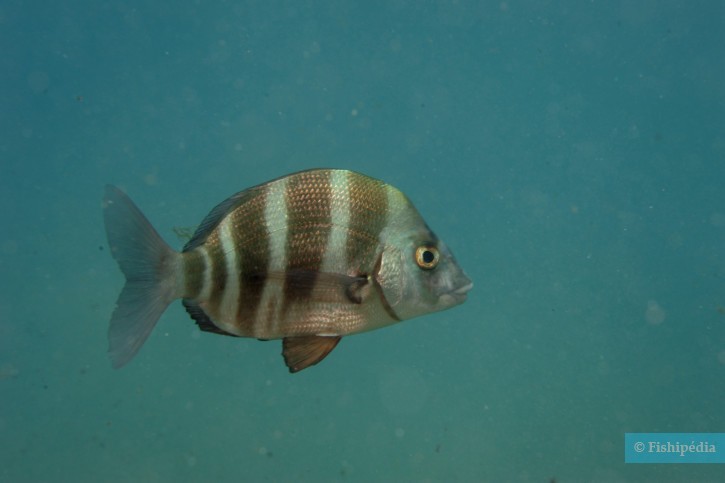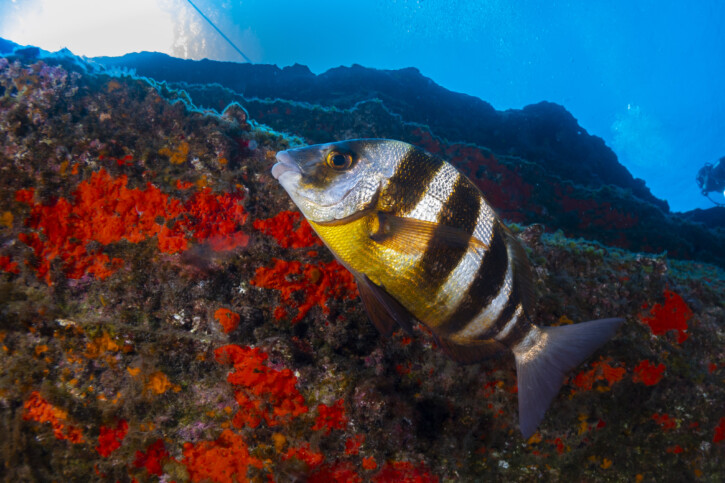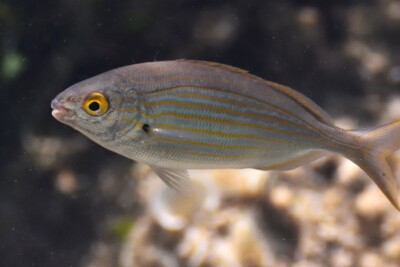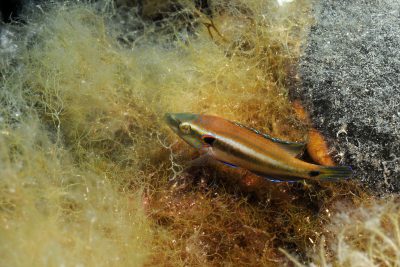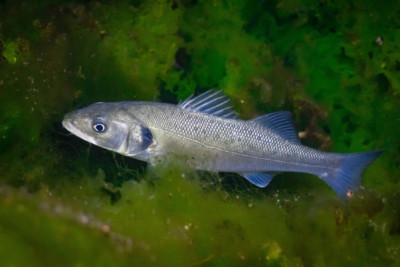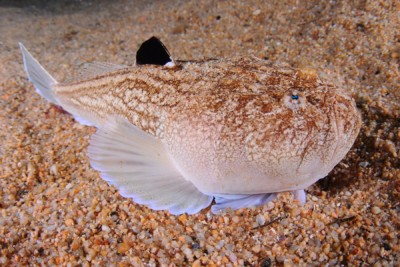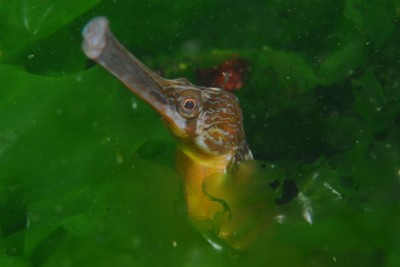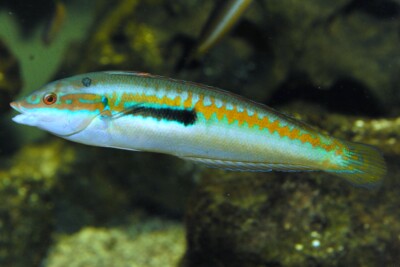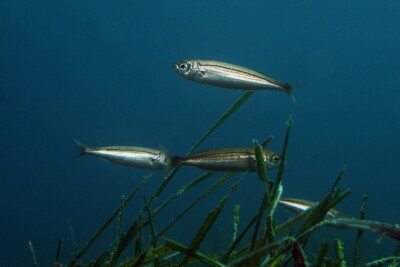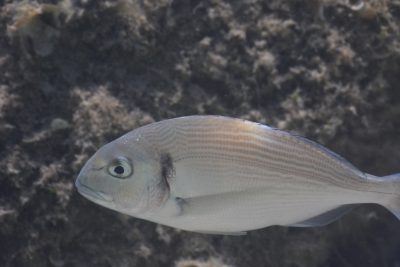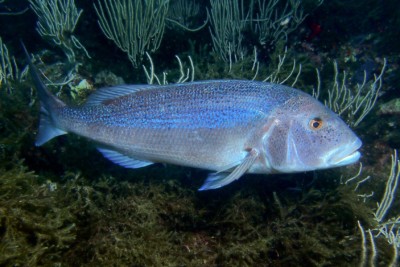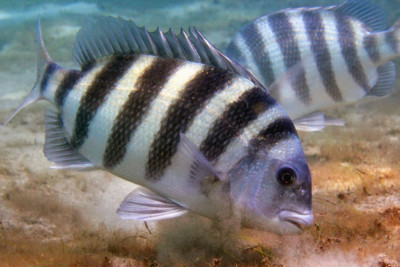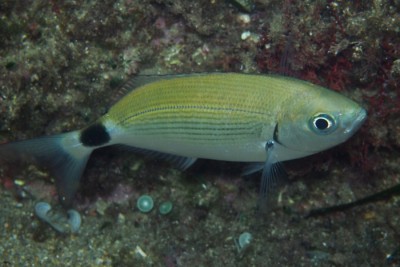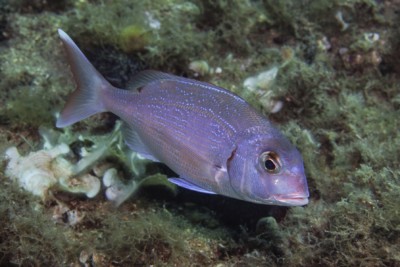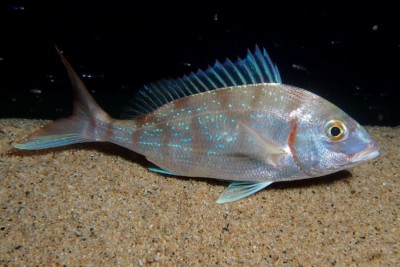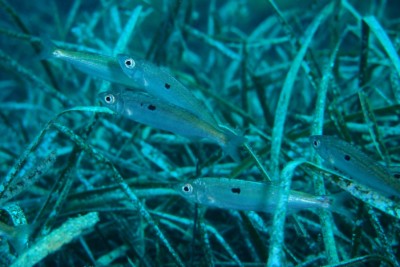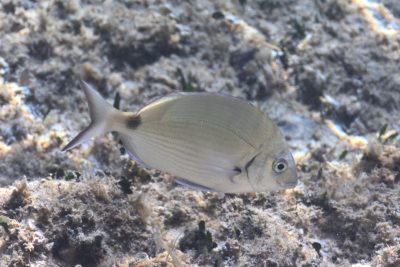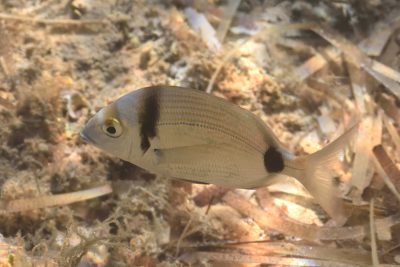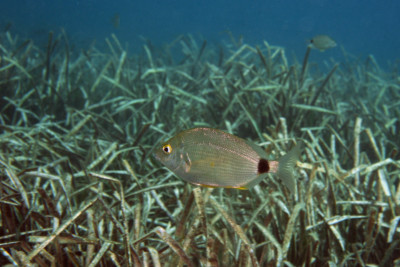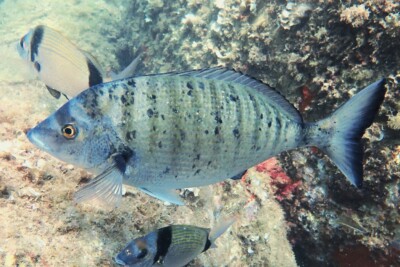zebra seabream
| Scientific name | Diplodus cervinus |
|---|---|
| Descriptor | Lowe |
| Year of description | 1838 |
| IUCN category (World) | LC |
| Family | Sparidae |
| Genus | Diplodus |
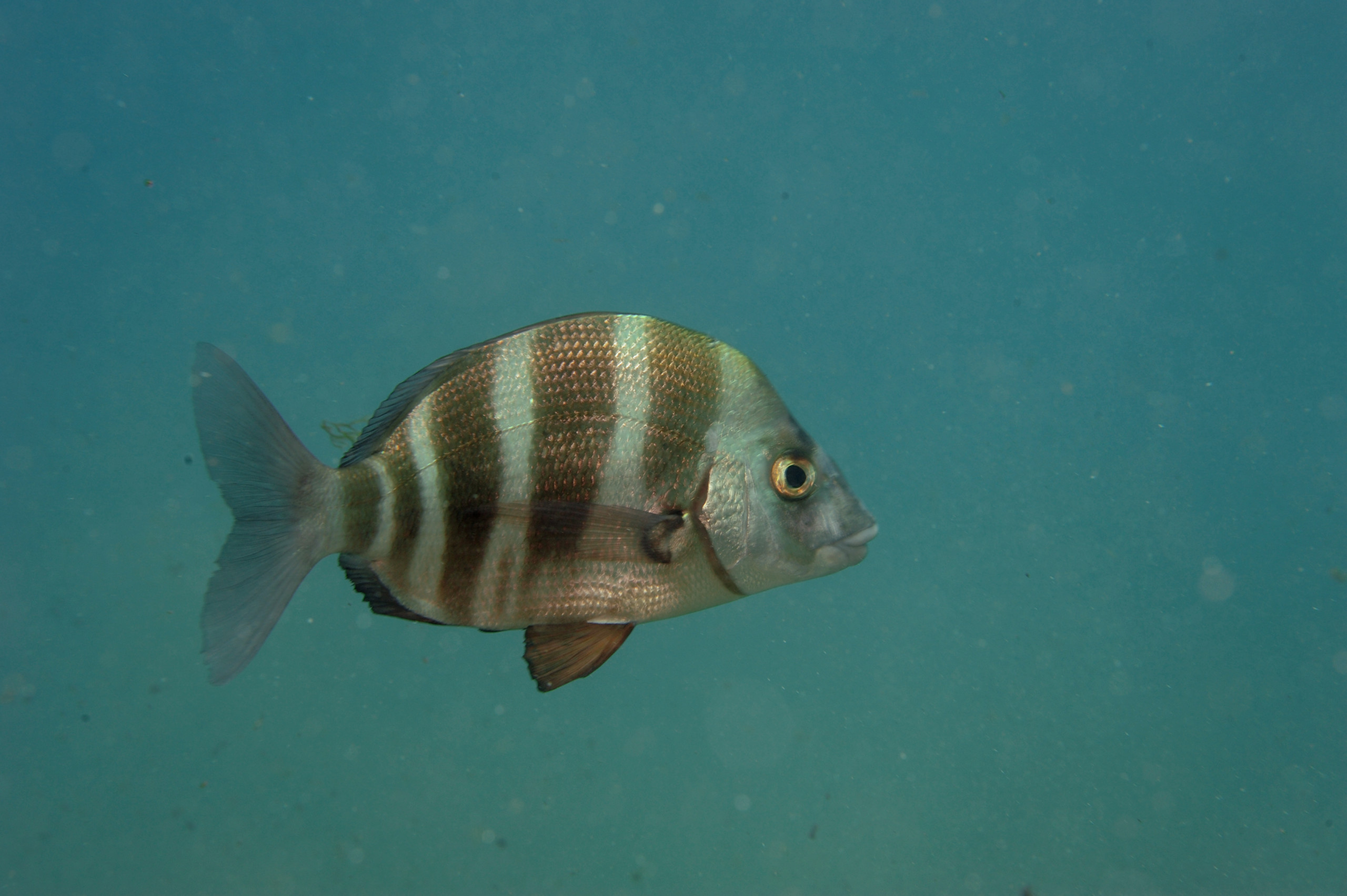

Introduction
Diplodus cervinus, more commonly known as the zebra seabream or striped bream, is a widespread marine fish. There are three subspecies: hottentotus (Indian Ocean), omanensis (from South Africa to the Arabian Sea), and cervinus (North Sea, Mediterranean Sea, and Eastern Atlantic Ocean).
Appreciated for its meat, this fish appears to be under significant fishing pressure. Its rapid growth makes it an interesting fish for aquaculture. However, it is sensitive to stress, which prevents mass breeding.
Who is it?
Morphology
-
Type
-
Average size35 cm
-
Maximum size55 cm
-
ShapeOvoid
-
Patternvertical stripes
-
Type
-
Average size35 cm
-
Maximum size55 cm
-
ShapeOvoid
-
Patternvertical stripes
How to recognize This fish ?
Like other breams, the body is flat and oval. The average size is 35 cm but some specimens exceed 55 cm. It is likely that these individuals are rare due to fishing pressure.
The body is light gray with silver and golden reflections. Five wide dark vertical bands run across the body. The first is located in front of the dorsal fin and the last on the caudal peduncle. The head also has a vertical black band passing through the eye. During the breeding season, a yellow subocular spot appears.
Like other breams, this species has numerous spines: 11 or 12 on the dorsal fin and 3 on the caudal fin. The latter are grayish, and the pelvic fins are darker. The snout is pointed and the tip is dark. The mouth is slightly protrusible with thick lips.
Sexual dimorphism
Like other breams, sexual differentiation is difficult.
Behaviour & Life cycle
-
dietcarnivorous
-
Sociabilityliving in a group or alone
-
territorialNo
-
Way of livingdiurnal
This fish generally lives in small groups of less than ten individuals. Rather rare in the Mediterranean, it is sometimes observed with other breams (D. vulgaris and D. sargus sargus). Juveniles are omnivorous, feeding on algae, mussels, and other invertebrates, while adults are mainly carnivorous.
At low depths, this species is found in rocky areas. In deeper waters, it is more commonly found in muddy areas.
Reproduction
-
Hermaphroditeprotandric
Sexual maturity occurs at the age of 2, at a size of around 25 cm. Sex change occurs at the age of 5. Studies have shown that at least some individuals change sex during their growth.
In the Mediterranean, spawning occurs during the spring and summer. The breeding period varies depending on water temperature.
Larvae are pelagic and then return to the coast.
Harmless species
This species does not represent any particular threats to humans when encountered in its natural environment.
Origin and distribution

Geographic distribution & Conservation
Despite its wide distribution, this species is rare in much of its range. It is often absent from inventories of Mediterranean fish. Data is lacking to determine the health status of populations.
Conservation status of populations (IUCN)
What is its habitat?
Natural environment characteristics
-
Depth25 - 300 m
Biotope presentation
Although this species is recorded up to a depth of 300 m, it is most commonly found on rocky bottoms in the 30-meter zone. Benthopelagic, this fish can also be encountered alone on sandy or muddy bottoms.
Species of the same biotope
To go further
Sources & Contributions
Participation & Validation
The Fishipedia team and specialist contributors are committed to providing high-quality content. However, although the information comes from scientific sources or testimonials from specialists, the cards may contain inaccuracies.

Adrien Falzon

Benoit Chartrer

Julie Magnus
Translation
Translation done with the valuable contribution of our translators, who make this information available to a wider audience. We sincerely thank them for their commitment.
Bibliographic references
Âge, croissance et reproduction du sar tambour Diplodus cervinus cervinus (Sparidae) des côtes de l’Est algérien - Farid Derbal - M. Hichem Kara - sfi-cybium - 2013. Editor: G. Duhame
SPARIDAE - K.E. Carpenter - FAO Fisheries Synopsis - 0. Editor: G. Duhame
Scientific partners
Tags
Species of the same family
Same genus
Species of the same biotope
